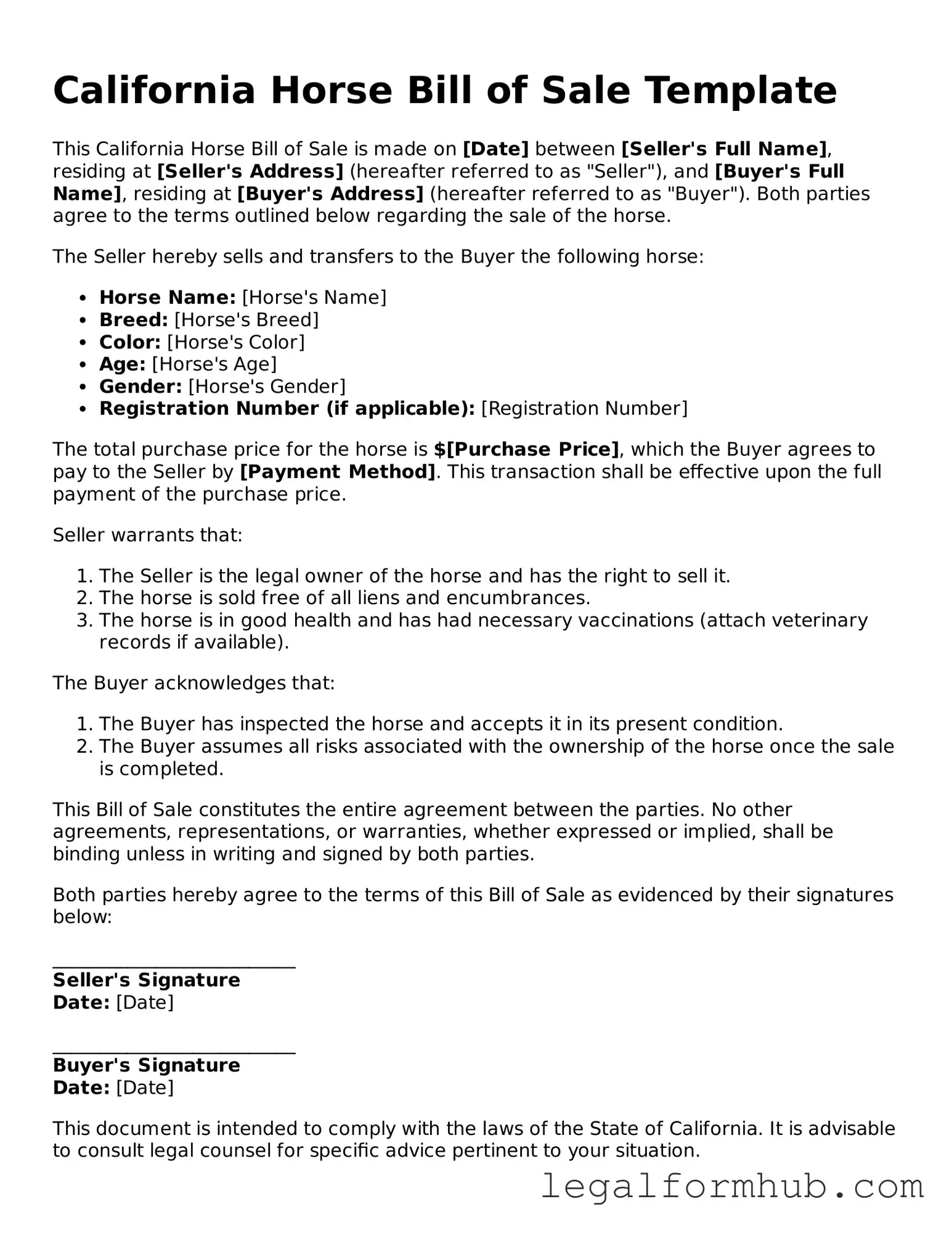Instructions on Writing California Horse Bill of Sale
After you have your California Horse Bill of Sale form ready, it’s time to fill it out accurately. This document is important for both the buyer and the seller, ensuring that all necessary information is recorded properly. Follow these steps to complete the form effectively.
- Identify the Seller: Write the full name and address of the seller. This should include the street address, city, state, and ZIP code.
- Identify the Buyer: Fill in the full name and address of the buyer, similar to how you listed the seller.
- Describe the Horse: Provide detailed information about the horse being sold. Include the horse's name, breed, age, color, and any identifying marks or registration numbers.
- Sale Price: Clearly state the sale price of the horse. Make sure this amount is accurate and agreed upon by both parties.
- Payment Terms: Specify the payment method and any terms related to the payment, such as whether it is a lump sum or installment payments.
- Date of Sale: Write the date on which the sale is taking place.
- Signatures: Both the seller and buyer must sign and date the form to validate the sale. Make sure to include printed names below the signatures for clarity.
Once you have completed the form, ensure that both parties keep a copy for their records. This will help avoid any misunderstandings in the future.
